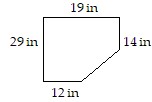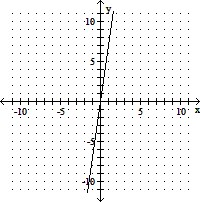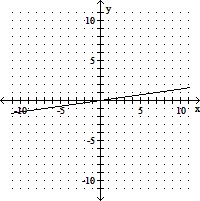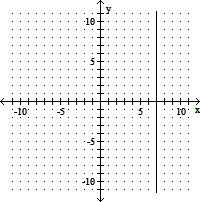Find the inverse of the function and state its domain and range .{(-3, 4), (-1, 5), (0, 2), (2, 6), (5, 7)}
A. {(3, -4), (1, -5), (0, -2), (-2, -6), (-5, -7)}; D = {3, 1, 0, -2, -5}; R = {-7, -6, -5, -4, -2}
B. {(4, -3), (5, -1), (2, 0), (6, 2), (7, 5)} D = {2, 4, 5, 6, 7}; R = {-3, -1, 0, 2, 5}
C. {(3, 4), (1, 5), (0, 2), (-2, 6), (-5, 7)}; D = {3, 1, 0, -2, -5}; R = {2, 4, 5, 6, 7}
D. {(-3, -4), (-1, -5), (0, -2), (2, -6), (5, -7)}; D = {-3, -1, 0, 2, 5}; R = {-7, -6, -5, -4, -2}
Answer: B
You might also like to view...
Find the area.
A. 232.5 in2 B. 483 in2 C. 498.5 in2 D. 715.5 in2
Solve the problem. Write your answer rounded to two decimal places.Find the length of the golden rectangle whose width is 12.07 cm.
A. 2556.47 cm B. 1952.97 cm C. 3763.47 cm D. 3905.93 cm
Graph. Label any intercepts and determine the slope of the line. If the slope is undefined, state this.y = 7
A. y-intercept: (0, 7), m: 0
B. y-intercept: (0, 0), m: 7
C. y-intercept: (0, 0), m: 

D. y-intercept: (7, 0), m: undefined
Solve.Jerry caught a fish that weighed 13 pounds. Pat caught a fish that weighed
pounds. Pat caught a fish that weighed  pounds. How much more did Jerry's fish weigh than Pat's fish?
pounds. How much more did Jerry's fish weigh than Pat's fish?
A. 3 pounds
pounds
B. 22 pounds
pounds
C. 21 pounds
pounds
D. 3 pounds
pounds